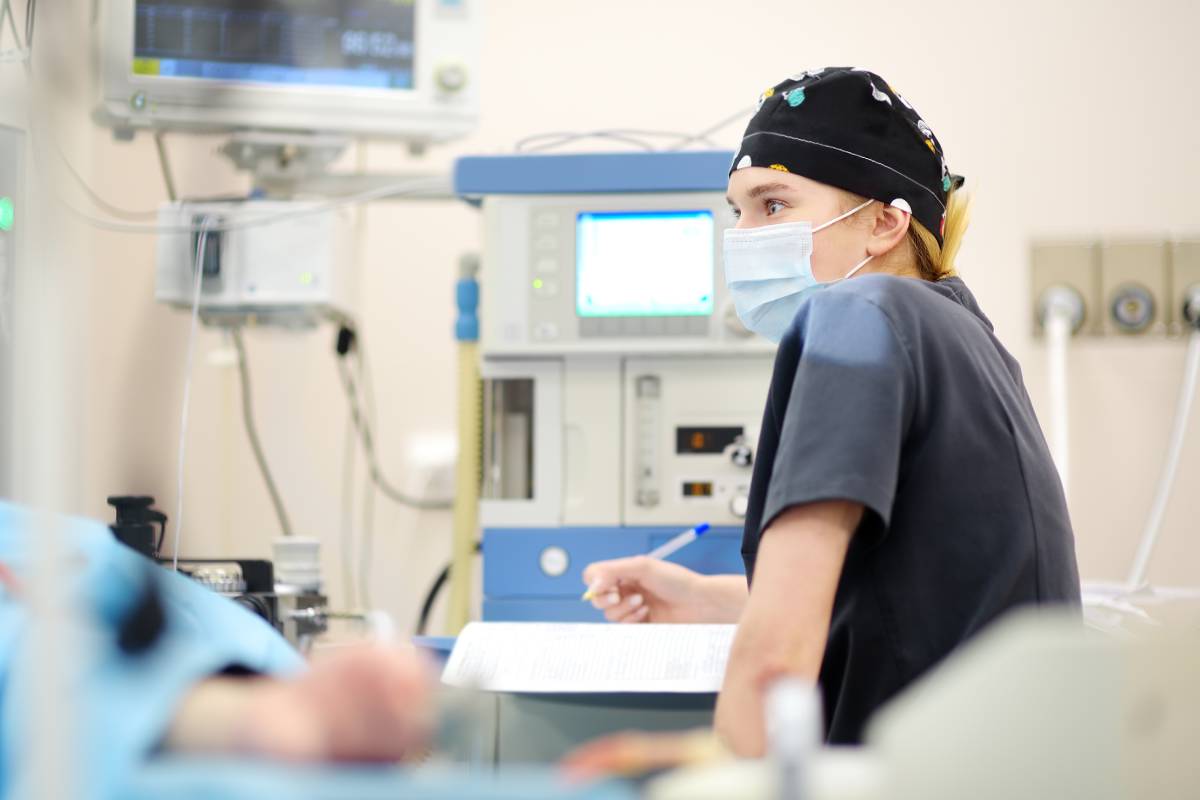Training Requirements for Anesthesiologists

Anesthesiology is a specialized medical field dedicated to the management of pain and anesthesia in perioperative and critical care. Anesthesiologists play a critical role in ensuring patient safety and comfort throughout the surgical experience. The training requirements for anesthesiologists are necessarily rigorous, encompassing multiple steps and many years.
The journey to becoming an anesthesiologist typically begins with obtaining a bachelor’s degree, followed by the completion of medical school. Prospective anesthesiologists must complete a four-year Doctor of Medicine (MD) or Doctor of Osteopathic Medicine (DO) degree program accredited by the Liaison Committee on Medical Education (LCME) or the Commission on Osteopathic College Accreditation (COCA), respectively.
After obtaining a medical degree, aspiring anesthesiologists undergo specialized residency training in anesthesiology. Anesthesiology residency programs typically span four years and are accredited by the Accreditation Council for Graduate Medical Education (ACGME) or the American Osteopathic Association (AOA). Residency training requirements typically include hands-on experience in various anesthesia subspecialties, including general anesthesia, regional anesthesia, obstetric anesthesia, pediatric anesthesia, and critical care medicine, to prepare future anesthesiologists for the wide-ranging demands of their profession 1.
Upon successful completion of residency training, physicians are eligible to pursue board certification in anesthesiology. Board certification is obtained through the American Board of Anesthesiology (ABA) or the American Osteopathic Board of Anesthesiology (AOBA), depending on the physician’s training pathway (MD or DO). Board certification requires passing comprehensive written and oral examinations that assess the physician’s knowledge, clinical skills, and judgment in the field of anesthesiology 1,2. Board-certified anesthesiologists are considered to have met all training requirements and to be qualified for practice.
However, the journey to becoming an anesthesiologist does not end with residency and board certification. Anesthesiologists are required to engage in lifelong learning through continuing medical education (CME) and maintenance of certification (MOC) activities. These activities are designed to ensure that anesthesiologists stay current with advances in medical knowledge, technology, and best practices in patient care.
CME requirements vary by state and specialty board but typically involve completing a certain number of CME credits over a specified time period. Generally, every five years, an anesthesiologist will need to earn 125 CME credits, and every 10 years, they will need to have earned a total of 250 CME credits. Anesthesiologists may earn CME credits by attending conferences, workshops, online courses, participating in research, or engaging in other educational activities relevant to their practice 3.
MOC requirements, established by specialty boards such as the ABA or AOBA, involve periodic assessments of anesthesiologists’ knowledge, clinical skills, and professionalism. This may include passing examinations, completing practice improvement projects, and demonstrating compliance with practice guidelines and quality metrics 4.
In addition to standard anesthesiology training, some anesthesiologists choose to pursue further subspecialty fellowship training to develop expertise in specific areas of anesthesia practice, each of which involves unique training requirements. Subspecialty fellowships typically span one to two years and focus on areas such as cardiac anesthesia, neuro-anesthesia, pain medicine, critical care medicine, or pediatric anesthesia. Fellowship training provides advanced clinical exposure, research opportunities, and specialized skills that enhance anesthesiologists’ ability to care for patients with complex medical needs 5.
Becoming an anesthesiologist requires a rigorous and multi-faceted training pathway encompassing medical education, residency training, board certification, and ongoing professional development through CME and MOC activities. By meeting these training requirements and continuously striving for excellence in patient care, anesthesiologists uphold the highest standards of safety, efficacy, and compassion in the perioperative management of patients undergoing surgical procedures.
References
1. How Long to Become an Anesthesiologist | AUC School of Medicine. Available at: https://www.aucmed.edu/about/blog/how-long-to-become-anesthesiologist. (Accessed: 9th May 2024)
2. How To Become An Anesthesiologist – Forbes Advisor. Available at: https://www.forbes.com/advisor/education/healthcare/how-to-become-an-anesthesiologist/. (Accessed: 9th May 2024)
3. CME – The American Board of Anesthesiology. Available at: https://www.theaba.org/maintain-certification/cme/. (Accessed: 9th December 2023)
4. Maintain Certification – The American Board of Anesthesiology. Available at: https://www.theaba.org/maintain-certification/. (Accessed: 9th May 2024)
5. Fellowship Opportunities | American Society of Anesthesiologists (ASA). Available at: https://www.asahq.org/education-and-career/asa-resident-component/residentfellows-in-training/fellowship-opportunities. (Accessed: 9th May 2024)
